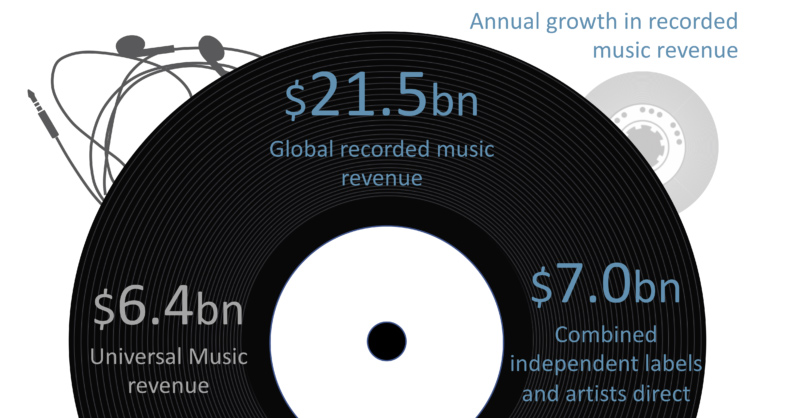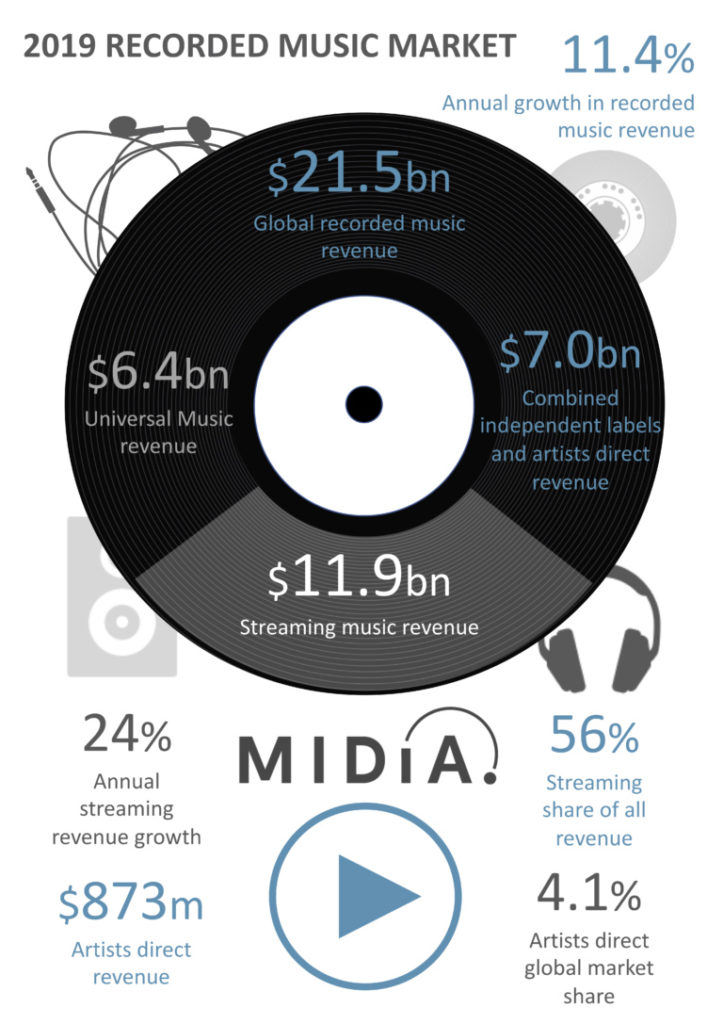
With IPOs from Warner Music and Universal Music pending and continued institutional investment into music catalogues, the music business is firmly in the sights of big money. The performance of the recorded music business in 2019 is going to heat up interest even further. The global recorded music industry continued its resurgence in 2019 with a fifth successive year of growth. Global revenues grew by 11.4% in 2019 to reach $21.5 billion, an increase of $2.2 billion on 2018. That growth was bigger than 2018 in both absolute and relative terms. Whichever way you look at it, growth accelerated, and – crucially – this growth was achieved even though streaming revenue growth slowed.
These are the key trends that underpinned growth:
Independence is on the rise: The major record labels retained the lion’s share of the overall market in 2019, accounting for 67.5% of the total – down half a point from 68.0% in 2018. The remaining 32.5% accounted for by independent labels and artists combined was up 0.5 points from 2017 and 4.6 points from 2015. Artists direct – i.e. artists without record labels – was again the fastest-growing segment of the market, growing by 32.1% in 2019 to reach $873 million, representing 4.1% of the total market, up from 1.7% in 2015.
Big year for Universal: Universal Music Group was the big winner among the majors, growing both faster than the other two majors and the total market to reach 30% market share. Universal also added more revenue in 2019 ($729 million) than Warner Music and Sony Music combined ($650 million).
Race for 2nd heats up: In 2015 Warner Music’s recorded music revenue was just 67% of Sony Music’s, and at the end of 2019 that share had increased to 93%. Just $279 million separated Warner and Sony at the end of 2019. Based on 2019 growth rates, Warner would be level with Sony by the end of 2022.
Still stream powered: Streaming was again the key source of growth, up 24% year-on-year to reach $11.9 billion, representing 56% of all label revenues. But growth is slowing; streaming revenue grew by $2.3 billion, which was $64 million less than in 2018. The reason that the total market was able to grow as fast as it did in spite of this is because downloads and physical fell by $0.4 billion less than in 2018. So, ironically, it was the improved performance of legacy formats that enabled streaming’s performance to be good enough to drive 11.4% growth.
Despite the inevitable slowdown in streaming revenue growth, the recorded music market managed to not only consolidate on its strong 2018 performance but improve upon it in 2019. The continued boom in recorded music revenues is accompanied by a growing complexity to the underlying business, with increased diversification of business models and artist/label relationships. Over the next few years continued revenue growth will be both accompanied and driven by business model innovation and disruption. S: Midia report




